"A valid concern..." Oh please. Everyone picks the software they like and the origin of that software is an afterthought.…
News 8/28/13
Top News
Two Kansas HIEs, one covering Kansas City and the other serving the rest of the state, risk losing their federal grant money if they can’t agree on data exchange terms by the state-imposed deadline of September 30 (already extended from July 30). LACIE and KHIN could be forced to shut down by the end of the year if they haven’t worked out their differences by then. KHIN doesn’t want the network to share data with insurance companies that aren’t KHIN members, while LACIE says the agreement would prohibit organizations that are connected to an ACO from accessing the network’s data. At issue is aggregated information that could be used for non-patient care purposes. The Kansas HIE board voted to shut itself down in September 2012 and let the Kansas Department of Health and Environment take over its duties, which means the state is in charge. Kansas has no secondary data use policy.
Reader Comments
From Joyce: “Re: Mission Hospital, Asheville, NC. Laying off 70 workers, which is big news in a small town where healthcare supports the local economy.” The 730-bed hospital will cut the CEO’s salary by 26 percent, slash management salaries from 13 to 20 percent, eliminate merit increases, implement a three-month PTO freeze where time off is not accrued for worked hours, reduce its 403(b) matching, and reduce the employee wellness incentive. The hospital’s CEO made $480K in 2010, while the CIO was paid $349K. That’s the problem with hospitals – they provide growth to their local economy, but much of that is paid for by federal taxpayers in the form of unsustainably rising national healthcare costs. Building an economy based on healthcare won’t work, which politicians seem reluctant to admit since hospitals employ a lot of people and write nice political donation checks.
From HealthPlans: “Re: WellPoint. AJ Lang is no longer with the company, an internal employee tells me.” A WellPoint spokesperson confirms that Andrew J. Lang, senior VP of application development since December 2008, is no longer with the company.
From Mennonite Rockstar: “Re: BIDMC IT security after the Boston bombing. I had the impression they rearranged the setup of their homegrown application’s security from reading the Fast Company article. Perhaps Mr. HIStalk can get Halamka to clarify?” John says that his IT shop made no changes to their applications, but did tweak their audit log reports to allow the hospital’s compliance department to monitor the specific situation.
Acquisitions, Funding, Business, and Stock
Group purchasing organization Premier Inc., owned by 181 hospitals, health systems, and other healthcare organizations, files plans for an IPO of up to $100 million in common stock. Premier had $869 million in net revenue for the fiscal year that ended June 30, up 13 percent from the prior year.
Merge Healthcare Chairman Michael Ferro, Jr. resigns and is replaced by board member Dennis Bell. Ferro, Merge’s top shareholder, has indicated that he may eventually explore ways to boost shareholder value, including taking the company private. MRGE shares were unchanged on the news.
Federal HIT provider Systems Made Simple projects 2013 income of $260 million, up from $167 million in 2012.
The strategic venture arm of Canada’s TELUS makes an unspecified investment in Rockville, MD-based Get Real Health, which offers the InstantPHR personal health record. Three of the company’s seven executives came from US Web, while two were Microsoft HealthVault developers.
Sales
Southern Prairie Community Care ACO (MN) will deploy technology from Sandlot Solutions to manage patient health information and give providers access to data at the point of care.
HealthproMed (PR) selects eClinicalWorks EHR for its two-location FQHC.
Greenway Medical will develop an HIE for more than 500 physician members of the Denver-area Rose Medical Group, Rose Medical Center, and their patients.
Grady Health System (GA) selects Strata Decision Technology’s StrataJazz for cost accounting, operating budgeting, and capital planning.
PinnacleHealth will use Care Team Connect’s integration and rules engine to integrate biometric data from Honeywell monitoring devices with other patient health data.
Palmetto Health (SC) chooses 3M 360 Encompass System for automated coding, clinical documentation improvement, and performance monitoring.
The National Football League signs a 10-year agreement for the ININITT Smart-NET PACS, which will allow the medical images of players to be viewed remotely or from mobile devices on the sidelines.
People
QHR Corporation, a Canada-based HIT company, names Owen Haley (Allscripts) chief commercial officer.
Tony Scott (Microsoft) joins VMware as CIO.
Cumberland Consulting Group adds Joseph Serpente (McKesson) as director of business development.
Announcements and Implementations
PeaceHealth’s Peace Island Medical Center (WA) goes live on Epic September 1.
![]() Emdeon launches a self-service testing exchange solution for ICD-10, allowing providers and channel partners to submit ICD-10 test claims and receive claim status feedback. The Emdeon Testing Exchange for ICD-10, which Emdeon purports is the first of its kind in the industry, requires no additional software and is a free service to Emdeon providers, channel partners, and payer customers. Sounds like a great service that would be even more valuable if more payers were ready and if providers already had ICD-10-ready software updates from their vendors.
Emdeon launches a self-service testing exchange solution for ICD-10, allowing providers and channel partners to submit ICD-10 test claims and receive claim status feedback. The Emdeon Testing Exchange for ICD-10, which Emdeon purports is the first of its kind in the industry, requires no additional software and is a free service to Emdeon providers, channel partners, and payer customers. Sounds like a great service that would be even more valuable if more payers were ready and if providers already had ICD-10-ready software updates from their vendors.
Greenway presents Innovation Awards to Boulder Community Hospital Physician Clinics (CO), Regional Obstetrical Consultants (TN), and Albuquerque Health Care for the Homeless (NM) at its PrimeLEADER user conference in Washington, DC.
Sonora Regional Medical Center (CA) goes live on Cerner September 4.
Vocera announces enhancements to its secure messaging platform that include on-call scheduling, new smartphone clients, an improved Web console, and server enhancements.
![]() I came across this tweet today. Ah, athenahealth, I don’t think you can convince me that switching EHRs is as easy as switching from Time Warner to AT&T U-verse.
I came across this tweet today. Ah, athenahealth, I don’t think you can convince me that switching EHRs is as easy as switching from Time Warner to AT&T U-verse.
Innovation and Research
University of Florida researchers are developing a scoring model that will use hospital EHR information to identify inpatients most likely to experience an adverse drug event, allowing those patients to be more aggressively monitored. The result will be rolled out to 13 hospitals for validation in the study’s second year.
An Ohio surgeon wearing Google Glass during a surgery broadcasts the procedure over the campus network, also using it to consult with a colleague.
Other
![]() Apple is rumored to be planning a trade-in program for iPhones in an attempt to increase the percentage of units it sells directly. What Apple is really trying to do is get more people like me to walk into their retail stores and spontaneously drop $50 on the latest, greatest cool Apple accessory. The speculation is that Apple will tie the trade-in value to the cost of an upgraded iPhone and offer an amount less than the open market value or what third-party companies like Gazelle would pay. I’m not due for a discounted upgrade any time soon, but my 16GB iPhone 5 is almost filled up. Maybe I’ll be one of the nerdy folks queuing up in line at the Apple store the first day the newest iPhone is released, supposedly in late September.
Apple is rumored to be planning a trade-in program for iPhones in an attempt to increase the percentage of units it sells directly. What Apple is really trying to do is get more people like me to walk into their retail stores and spontaneously drop $50 on the latest, greatest cool Apple accessory. The speculation is that Apple will tie the trade-in value to the cost of an upgraded iPhone and offer an amount less than the open market value or what third-party companies like Gazelle would pay. I’m not due for a discounted upgrade any time soon, but my 16GB iPhone 5 is almost filled up. Maybe I’ll be one of the nerdy folks queuing up in line at the Apple store the first day the newest iPhone is released, supposedly in late September.
Cerner and Epic are winning three-fourths of all new large-hospital EMR deals, according to a new KLAS report on clinical market share. Cerner and Epic dominate in community hospitals, though McKesson Paragon and Meditech are gaining some traction. Biggest net customer losers for 2012 were McKesson and Siemens, while Epic was the only vendor that didn’t lose any customers. Allscripts, GE Healthcare, and QuadraMed had no wins at all.
![]() HIMSS opens registration for its annual conference February 23-27 in Orlando. Aetna CEO Mark Bertolini will deliver the keynote address bright and early Monday, while Wednesday afternoon’s keynote speaker is still TBA. The Thursday afternoon keynote is “world class blind adventurer” Erik Weihenmayer, who unfortunately may not be enough of a draw to prevent weary crowds from making a mass exodus Thursday morning.
HIMSS opens registration for its annual conference February 23-27 in Orlando. Aetna CEO Mark Bertolini will deliver the keynote address bright and early Monday, while Wednesday afternoon’s keynote speaker is still TBA. The Thursday afternoon keynote is “world class blind adventurer” Erik Weihenmayer, who unfortunately may not be enough of a draw to prevent weary crowds from making a mass exodus Thursday morning.
A California Nurses Association press release claims that Sutter Health’s Epic system went down Monday at its Northern California hospitals following an eight-hour upgrade-related downtime on Friday. A union spokesperson was quoted as saying, “This incident is especially worrisome. It is a reminder of the false promise of information technology in medical care. No access to medication orders, patient allergies and other information puts patients at serious risk. These systems should never be relied upon for protecting patients or assuring the delivery of the safest care.” While the union did not issue an equally passionate press release extolling the virtues of paper charts, it did throw in unrelated shots at management for urging nurses to enter patient charges correctly, apparently preferring that Sutter not bill what it’s owed even though those funds allow it to generously pay unionized nurses.
The Gainesville, FL newspaper profiles 12-employee RegisterPatient (now using the name Ingage Patient)and its CEO Jana Jones, who was formerly CEO of BCBS of Tennessee subsidiary Shared Health. According to the company’s site, the product offers appointment scheduling, alerts, registration, secure messaging, check-in, health education, a PHR, care plan integration, renewal requests, and electronic referrals.
This photo by @Nurse_Rachel_ is surely embarrassing Sinai Hospital of Baltimore as it lights up Twitter. Nobody should be surprised that hospitals and doctors do whatever pays them the most; to expect otherwise is naive.
Weird News Andy says, “Nurse, doctor, what’s the difference?” A draft VA policy would eliminate the requirement that advanced practice nurses, including nurse anesthetists, be supervised by physicians. Take a wild guess at how the American Society of Anesthesiologists feels about that.
WNA also notes an AARP report warning that 20 years from now, aging baby boomers won’t have enough family members to take care of them because of increased longevity, fewer children, and a high divorce rate. Family care is worth an unpaid $450 billion per year
Technical problems with the site Sunday and early Monday forced me (for reasons too hard to explain) to remove Vince’s HIS-tory of Cerner in the Monday Morning Update and simply link to it instead. Here it is again. Meanwhile, the site is now running on a supercharged new server that will better handle the readership growth. I’ll probably appreciate that more after I’ve caught up for all the sleep I lost over the weekend as the web hosting people fixed the inevitable problems.
Sponsor Updates
- Imprivata introduces OneSign ProveID Embedded for use within virtual desktop environments.
- GetWellNetwork announces the call for presentations for its seventh annual user conference June 3-5, 2014 in Chicago.
- Frost & Sullivan recognizes Merge Healthcare with the 2013 North America Award for Product Leadership in Interoperability Solutions for its iConnect Enterprise Clinical platform.
- Wakely Consulting Group will process data from Truven Health MarketScan Research Databases through its Wakely Risk Assessment Model to help health plans meet HHS requirements for risk adjustment and reinsurance.
- Jason Fortin, senior advisor at Impact Advisors, discusses MU deadlines.
- The HCI Group is named to the Inc. 5000, coming in at #3 with 24,545 percent revenue growth in the past three years.
Contacts
Mr. H, Inga, Dr. Jayne, Dr. Gregg, Lt. Dan, Dr. Travis
More news: HIStalk Practice, HIStalk Connect










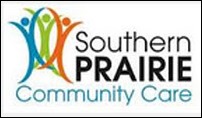




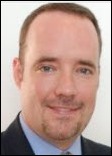






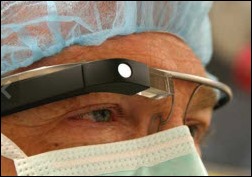

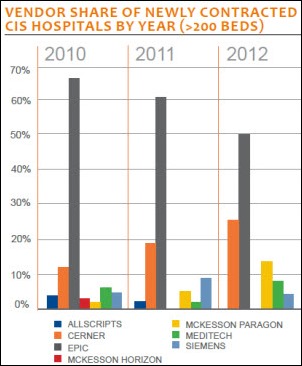
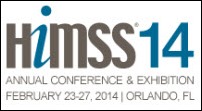

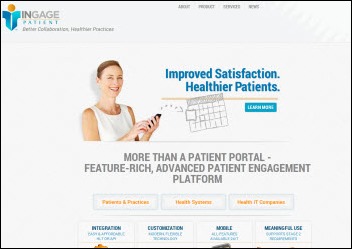


The CNA’s press release is only partially true.
The Epic server never went down at Sutter and the Epic upgrade went just fine.
What went down was related to a concurrent non Epic upgrade done to the Citrix infrastructure.
Epic was available through a few alternate paths and for approximately half the users who had been moved over to a disaster recovery Citrix farm.
Clearly a serious problem and significant outage, but in all things like this, truth does matter. We’re not getting that truth from the California Nurses Association.
Mr H. – maybe you could get a few direct comments from the Sutter CIO.
Re: HIMSS speakers. Erik Weihenmayer keynoted the NextGen User Group several years ago. One of the most powerful presentations I’ve ever seen. I hope people stick around to hear him.
Epic was down, point blank. regardless if it was an Epic failure or the eco system in which Epic recommends (citrix) they end point to the nurses, staff and patients is Epic was down. Your comments are the exact kind of blame game that drives us crazy. Wake Med and Sutter have both been nothng short of disasters.
RE: Mission Hospital – Job Cuts & Layoffs
Press Release from Mission’s CEO:
The following is the press release from Ronald Paulus: “Dear Board, Caregivers and Physicians: In my last communication, I told you that I would keep everyone up‐to‐date in a direct, transparent manner as we worked through our very difficult budget challenges for 2014. This letter is the next step in that ongoing process, but first, I would like to briefly reflect on our work together. When I arrived at Mission in September 2010, I focused on just a few things: learning about our organization and community, responding to acute events, building the team and creating bridges to the future. In particular, I chose to invest heavily in patient safety and quality, rather than to focus on reducing waste. Over the past three years, we have dramatically improved our patients’ experiences and outcomes and I want to thank each of you for your superb work in ensuring that we achieve our BIG(GER) Aim at Mission. As just two examples: 1) our patient experience ratings have improved from the 60th to the 90th percentiles nationally; and 2) Mission now has more than 500 fewer patient deaths per year than expected (when compared to 2010 performance). As all of you know, we face numerous challenges: healthcare reform, federal sequestration, lack of Medicaid expansion and Medicaid cuts. Hospitals across our state and region have initiated layoffs of hundreds of their employees. To offset these changes, I chose a different path in 2013 by focusing intensively on process redesign; it is heartwarming to see the impact of those efforts (some of which I shared in my last communication). However, as good as our work has been, we simply aren’t where we need to be – not yet. I believe that it will take another year to fully realize the benefits from our redesign efforts as we continue to improve quality and reduce waste. Therefore, we need a strategy to “buy time” ‐ to allow that work to not only continue, but accelerate. In my last letter, I outlined the core principles that we would follow in responding to our challenges including: a community‐first focus, positioning Mission for future success via our 4 Point Strategic Plan and to the greatest extent possible, retaining jobs, compensation and benefits for our caregivers. We have tried our best, but to have the time we need to thoughtfully reengineer our processes we do need to make some changes that will reduce our costs more rapidly than reengineering allows. Below, I describe the most substantive changes that directly impact our team. Changes Impacting Mission Leadership Only: – First, I’m cutting my own compensation by 26% for 2014. As I said in my last letter, leaders must go first, and as CEO, I must go first among our leaders. – The 2014 compensation of other leaders will also be reduced as follows: o SVPs = 20%; Presidents/VPs = 17%; Directors = 13% o Also, we have eliminated three Vice President positions Changes Impacting Many or All Caregivers: – Our last merit increase was in February 2013, but there will be no merit increases for 2014 system‐wide. Market adjustments will be considered based upon market conditions. – There will be a system‐wide “PTO Accrual Freeze” for a maximum of three months during 2014. What this means is that in February 2014, you will not earn PTO. Based upon our financial performance, a second or third monthly “PTO Accrual Freeze” may occur in 2014. – There will be two rather than four PTO sell‐back opportunities in 2014. – Beginning in January of 2014, Mission’s 403b match for current participants will be reduced from 4%/6%/8% to 4%/5%/7% (based upon years of service). Although a modest reduction for some, our 403b matching program remains significantly better than market. – Also beginning in January, 2014, newly hired caregivers only will receive a different 403b match: 50% of the first 6% of contributions (after one year of service), which is better aligned with the market. – The maximum value of the November gift cards is reduced from $150 to $75. We will implement a new caregiver reward system in 2014 (see below) that will replace gift cards. – Our wellness incentive is retained, but that incentive is reduced to $100/quarter. Some Good News: – Our health insurance premium for caregivers will increase a very modest 5% (for a nonsmoking caregiver who completes the HRA). In addition we have included ‐ for the first time ever ‐ a cap on an employee’s portion of out‐of‐network expenses so that no caregiver who participates in our health plan suffers a catastrophic loss due to their health expenses. – We are building upon our Great Place to Work and Practice journey with the introduction of a new caregiver reward and recognition program. The platform will make it fun and easy for anyone across the system to receive recognition for excellent work. When awarded points, there is an incredibly diverse range of gift choices (along with traditional gift cards). – We will not “retreat into a shell”, but rather focus on executing our strategic plan. We will continue to hire new staff in those roles and programs that position us for future success. – Finally, if we work together successfully so that our 2014 performance proves better than budgeted and we achieve certain financial targets that will be clearly specified, I will reinstate some or all of the PTO accrual that was “frozen” and potentially provide for merit increases or earn back of leadership’s lost compensation. Although these measures eliminated the need for program closures and radically reduced job eliminations by more than 500 positions, there will be some caregivers (fewer than 70) who are nonetheless impacted by a job loss. When even one caregiver loses his or her job, it is devastating, so our hearts are with those caregivers and their families. For any job elimination, we will work hard to find an alternative role that is appropriate for the skills and experience of that individual. While that will not always be possible, I do expect that it will significantly reduce the final number of staff impacted by an actual job loss. Finally, we know well that the challenges in our industry and region will not disappear and that many of these one‐time savings cannot and should not be repeated in 2015. What these decisions do accomplish is the original objective: to “buy time” so that our redesign efforts can fully bear fruit as we reengineer our future together. I’m counting on your continued support – as is our community ‐ to do just that. Sincerely, Ronald A. Paulus, MD”
Read More at: http://www.wlos.com/shared/news/features/top-stories/stories/wlos_mission-hospital-layoffs-budget-cuts-12956.shtml
@EpicBlameGame
I have no idea what the cause of the downtime was but, if it was due to a third party component that isn’t provided or supported by the main vendor, how can you reasonably blame Epic (or any other EHR vendor)? The EHR vendor doesn’t sell, deliver, implement or maintain Citrix. While Citrix may be recommended when the customer chooses to deliver the software in a virtual environment, it’s the responsibility of the customer (or another hired vendor) to implement and maintain that environment. If the network goes down, or better yet, power goes out completely, it stands to reason that the EHR platform would be affected as well but I think most people would agree that has nothing to do with the EHR software. I agree completely that to the end user, all they care about is having the availability they need to do their jobs but it’s a bit facetious to blame the EHR vendor for something they have no control over. It would be more accurate to look at who is managing the environment as a first step. Look, I’m all for banging Epic and any other EHR vendor for the very real issues in their workflows, usability, safety, etc… but this is just opportunism in blaming the EHR for any problems whatsoever. That’s crazy and cheapens the message of the component of the anti-EHR crowd that has thoughtful, real concerns.
Sutter Health spokersperson Bill Gleeson provided this official response to HIStalk Wednesday afternoon:
“Sutter Health undertook a long-planned, routine upgrade of its electronic health record over the weekend. There’s a certain amount of scheduled downtime associated with these upgrades, and the process was successfully completed. On Monday morning, we experienced an issue with the software that manages user access to the EHR. This caused intermittent access challenges in some locations. Our team applied a software patch Monday night to resolve the issue and restore access. Our caregivers and office staff have established and comprehensive processes that they follow when the EHR is offline. They followed these procedures. Patient records were always secure and intact. Prior to Monday’s temporary access issue, our uptime percentage was an impressive 99.4% with these systems that operate 24/7. We appreciate the hard work of our caregivers and support staff to follow our routine back-up processes, and we regret any inconvenience this may have caused patients. California Nurse Union continues to oppose the use of information technology in health care but we and other health care provider organizations demonstrate daily that it can be used to improve patient care, convenience and access. It’s unfortunate the union exploited and misrepresented this.”
I find it sad that any valid points or concerns that the CNA publicizes get lost in the hyperbole (like use of the word meltdown and using “upgrade” with the quotes) and otherwise unprofessional criticism that they seem to publish. It would be easier to take them seriously if they didn’t come across as an MSNBC/Fox News editorial style meant to preach to choir instead of convincing the other side.
In this case, it would be the lack of proper downtime procedures that would hurt patient care. That would be the real negligence if true in this case. Especially since it was a planned downtime.
Agree with is-it-the-future-yet…
This outage was not caused in any way by Epic and in a component not provided by or supported by Epic but happened to be changed during the same downtime used for the upgrade because it was a convenient time to do it.
Do you blame power failures on the EHR vendor? Do you blame hardware failure on the EHR vendor?
That’s almost as silly as blaming it on the nurse. We’re all in this together and the kind of vitriol coming out the the CNA is a disgrace to the good men and women that care for patients as nurses, doctors, IT workers and yes – Vendors.
It’s not like nurses practice for free but because vendors get paid too they are somehow a scapegoat in this situation?
This is why labor unions are falling out of favor nationally.
The CNA needs to move away from Hoffa Teamsters tactics and figure out how to cope with the future as a partner in continual learning and advancing the ball.
Re: “did throw in unrelated shots at management for urging nurses to enter patient charges correctly,”
“Urging” is a bit mild.
In fact what Sutter stated was, according to Healthcare IT News:
… “We have been on Epic for 5 months now, and we can no longer have incorrect orders, missing information or incorrect or missing charges. Starting on September 1st, errors made in any of the above will result in progressive discipline,” according to another hospital memo sent to staff.
“Progressive discipline” is not “urging.”
What, in fact, it represents is that nurses (and other clinicians) must now serve their Cybernetic Master, the EHR and its creators, to perfection, or be punished by adverse job actions that can ruin careers (apparently to improve morale)
I also note that there used to be coders to capture charges. Nurses actually have patient care responsibilities. One wonders if they are being fairly compensated for this new responsibility.
— SS
And by the way…rather than blame any particular product or component…the scenario is covered under the term “IT mismanagement” or, perhaps more apropos, “IT malpractice.”
What’s fair language for medical mishaps is fair language for IT snafus.